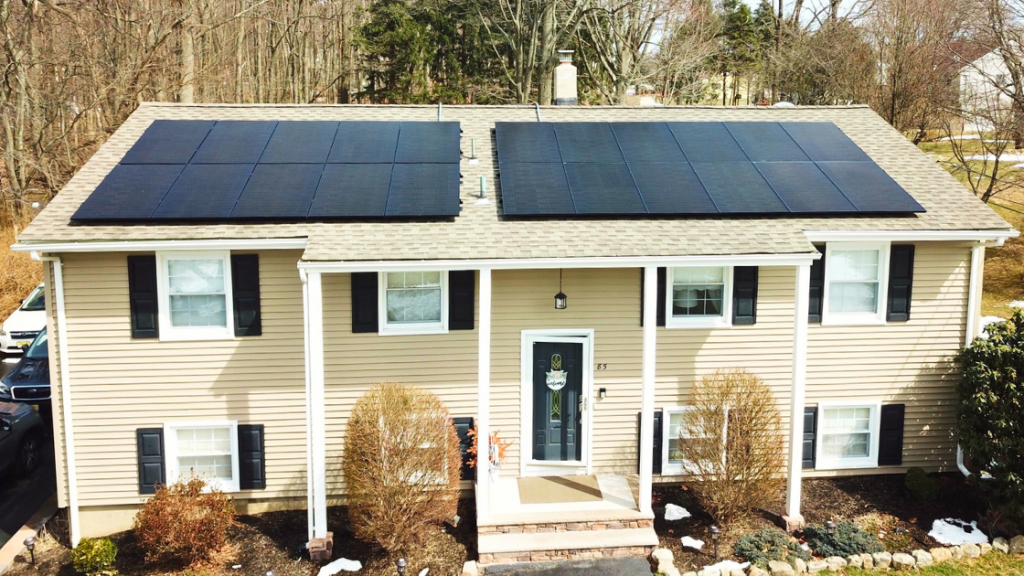In July 2025, a new federal law officially set an end date for the residential solar tax credit. The current 30% federal incentive will no longer be available for systems placed in service* after December 31, 2025.
This change shortens the window for homeowners who want to take advantage of one of the most impactful solar incentives in recent years.
The Tax Credit Ends December 31, 2025
Right now, the 30% federal tax credit saves the average homeowner around $9,000 on a solar installation. But after this year, that benefit is gone entirely. There’s no phase-out or grace period.
To qualify, your solar system needs to be considered “placed in service*”, which usually means your system has been physically installed and/or your utility has issued final Permission to Operate (PTO). That step is out of your installer’s hands and depends on your local utility. It’s one reason why exact timelines are hard to promise this late in the year.
How Green Power Energy Is Preparing
At Green Power Energy, we’re working hard to get as many of our customers installed and up and running before the end of 2025. We’ve expanded our installation crews, added more final inspection techs, and are doing everything we can to move projects through as efficiently as possible.
That said, local townships and utilities are already seeing a sharp increase in solar applications. Permits, inspections, and approvals may take longer than usual, especially with holidays and winter weather coming up.
We’re encouraging homeowners to sign up sooner rather than later. The earlier you start, the better your chances of making the deadline.
What About Leases and PPAs?
The recent policy change doesn’t affect all solar options the same way. If you go solar through a lease or power purchase agreement (PPA), the installer can still claim a separate commercial tax credit. That means these options remain available after 2025 and can still offer dependable monthly savings with little or no upfront cost.
With a lease or PPA, the solar company owns and maintains the system. You simply pay for the energy it produces, typically at a lower rate than your utility. This is a great fit for homeowners who want a simple, hands-off option.
If you’re unsure whether to lease or buy, we’ll walk you through the pros and cons and help you choose the right setup for your home and budget.
Even Without the Credit, Solar Still Pays Off
If your system isn’t installed in time to qualify for the credit, solar is still a smart investment. According to industry research, solar has become the most affordable form of electricity—even without incentives.
Source: PV Magazine USA
As utility rates continue to climb, going solar allows you to lock in long-term savings and protect yourself from future rate hikes. Whether or not you get the tax credit, solar remains one of the most effective ways to lower your electric bill.
Ready to Take the Next Step?
The 30% tax credit is still available—but time is running out. With rising demand and longer timelines across the board, now is the time to act.
Green Power Energy is ready to help you navigate the process, answer your questions, and get your project moving. Reach out today to see if your home qualifies and reserve your spot before the end-of-year deadline.
Disclaimer
*The federal tax credit amount is estimated and is subject to change dependent on federal legislation and the date your system is “placed in service”. The Federal Government recently changed the expiration date of the 30% Residential Solar Tax Credit to 12/31/2025. For the purposes of claiming your federal tax credit, Green Power Energy cannot define your system’s “placed in service” date. Federal incentives are solely the responsibility of the owner and it is advised to contact your tax professional to take advantage of this program and confirm eligibility. Green Power Energy shall not be held liable if your tax professional determines your tax credit amount differs from the amount estimated in your agreement. Green Power Energy shall not be held liable if the actual timeline of constructing your project differs from the Estimated Completion Date and ultimately results in the project not qualifying for the tax credit.





